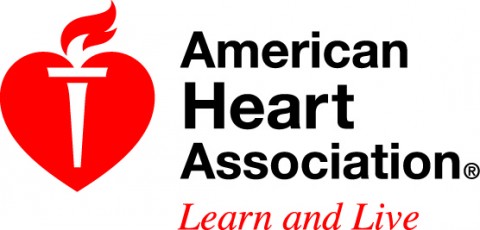The new tool is an extension of the ACC/AHA ASCVD Risk Estimator
 Washington, D.C. – A new assessment tool—the Million Hearts® Model Longitudinal ASCVD Risk Assessment tool—funded by the Centers for Medicare & Medicaid Services (CMS) in partnership with the American College of Cardiology and the American Heart Association— is designed to help predict the 10-year risk of developing atherosclerotic cardiovascular disease (ASVCD) and how that risk may change over time as preventive treatments are initiated.
Washington, D.C. – A new assessment tool—the Million Hearts® Model Longitudinal ASCVD Risk Assessment tool—funded by the Centers for Medicare & Medicaid Services (CMS) in partnership with the American College of Cardiology and the American Heart Association— is designed to help predict the 10-year risk of developing atherosclerotic cardiovascular disease (ASVCD) and how that risk may change over time as preventive treatments are initiated.
The tool is an extension of the ASCVD Pooled Cohort Equation first published in the 2013 ACC/AHA Guideline on the Assessment of Cardiovascular Risk.

The Million Hearts® Initiative, developed by the United States Department of Health and Human Services (HHS) and supported by the ACC and AHA, aims to prevent 1 million heart attacks and strokes by 2017 through the management of the “ABCS”—aspirin therapy, blood pressure control, cholesterol management and smoking cessation.
In support of the Million Hearts® Initiative, the Center for Medicare and Medicaid Innovation (Innovation Center), a part of CMS, is testing a large-cluster randomized payment model test of value-based payment—the Million Hearts® Cardiovascular Disease (CVD) Risk Reduction Model—to determine whether financially rewarding clinicians for reducing 10-year predicted risk for ASCVD across their patient population is an effective way to reduce first-time heart attacks and strokes.
Over 500 applicant organizations were selected to participate in the Million Hearts® Model. In order to help test this Model, CMS funded the development of the Million Hearts® Longitudinal ASCVD Risk Assessment tool, in partnership with the ACC and AHA, to improve on the ACC/AHA Pooled Cohort Equations risk estimator, currently used by the practices participating in the Model.
In the study, the tool aims to provide a framework for delivering appropriate risk-reducing strategies to Medicare patients with a 10-year ASCVD risk >30 percent.
To create the new tool, the Innovation Center’s Million Hearts® CVD Risk Reduction Model partnered with the chairs of the writing committee for the 2013 guideline, David C. Goff, Jr. MD, PhD, FAHA and Donald M. Lloyd-Jones, MD, ScM, FACC, FAHA. The tool is not a replacement for the ACC/AHA Pooled Cohort Equations risk estimator. Rather, the risk estimator is incorporated into the initial risk assessments of patients in the Model. The committee added existing evidence to extend the risk equation.
“The new tool is based upon a formal systematic review of the evidence of ABCS therapies to define what the expected risk reduction would be from each one, used alone or in combination,” said Lloyd-Jones, who is the chair of the writing committee that describes the new tool. “At an initial visit, clinicians can use the tool to project the expected updated risk if one or more of the ABCS interventions were initiated, then it can be used at a subsequent follow-up visit to estimate what is the actual achieved updated risk based on the patient’s individual response to those therapies and any lifestyle changes they may have made as well.”
The goal of the tool is to assist not only clinicians, but also patients, in understanding risk, monitoring risk over time, and quantifying potential benefits of preventive therapies.
“This tool will help clinicians and patients with shared-decision making and will aid in the understanding of how the ABCS may help to reduce risk,” said Lloyd-Jones.
Additional Resources
- Learn about atherosclerosis, the narrowing of arteries that causes heart attacks and strokes.
- Preventing and treating heart attacks
- Preventing and treating strokes
- My Life Check risk assessment
About the American College of Cardiology
The American College of Cardiology is a 52,000-member medical society that is the professional home for the entire cardiovascular care team. The mission of the College is to transform cardiovascular care and to improve heart health. The ACC leads in the formation of health policy, standards and guidelines.
The College operates national registries to measure and improve care, offers cardiovascular accreditation to hospitals and institutions, provides professional medical education, disseminates cardiovascular research and bestows credentials upon cardiovascular specialists who meet stringent qualifications. For more, visit acc.org.
About the American Heart Association
The American Heart Association is devoted to saving people from heart disease and stroke – America’s No. 1 and No. 5 killers. We team with millions of volunteers to fund innovative research, fight for stronger public health policies, and provide lifesaving tools and information to prevent and treat these diseases. The Dallas-based association is the nation’s oldest and largest voluntary organization dedicated to fighting heart disease and stroke.
To learn more or to get involved, call 1.800.AHA.USA1, visit heart.org or call any of our offices around the country. Follow us on Facebook and Twitter.



